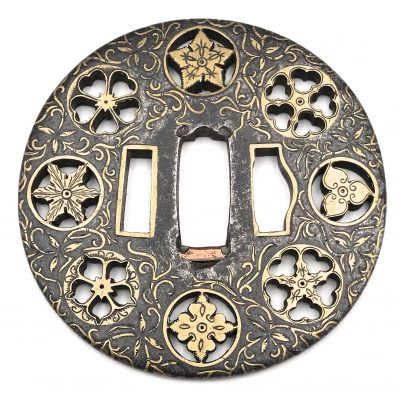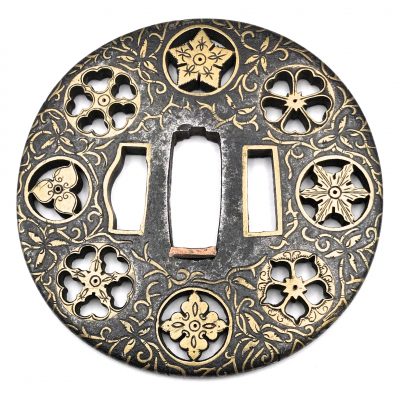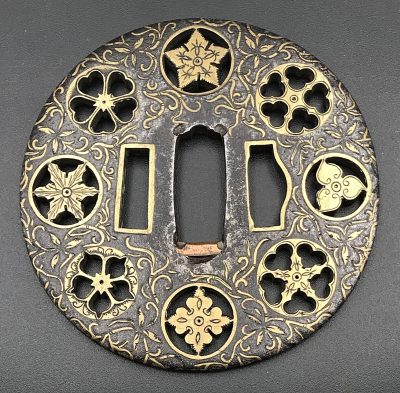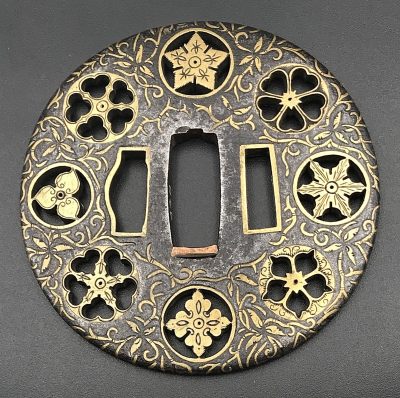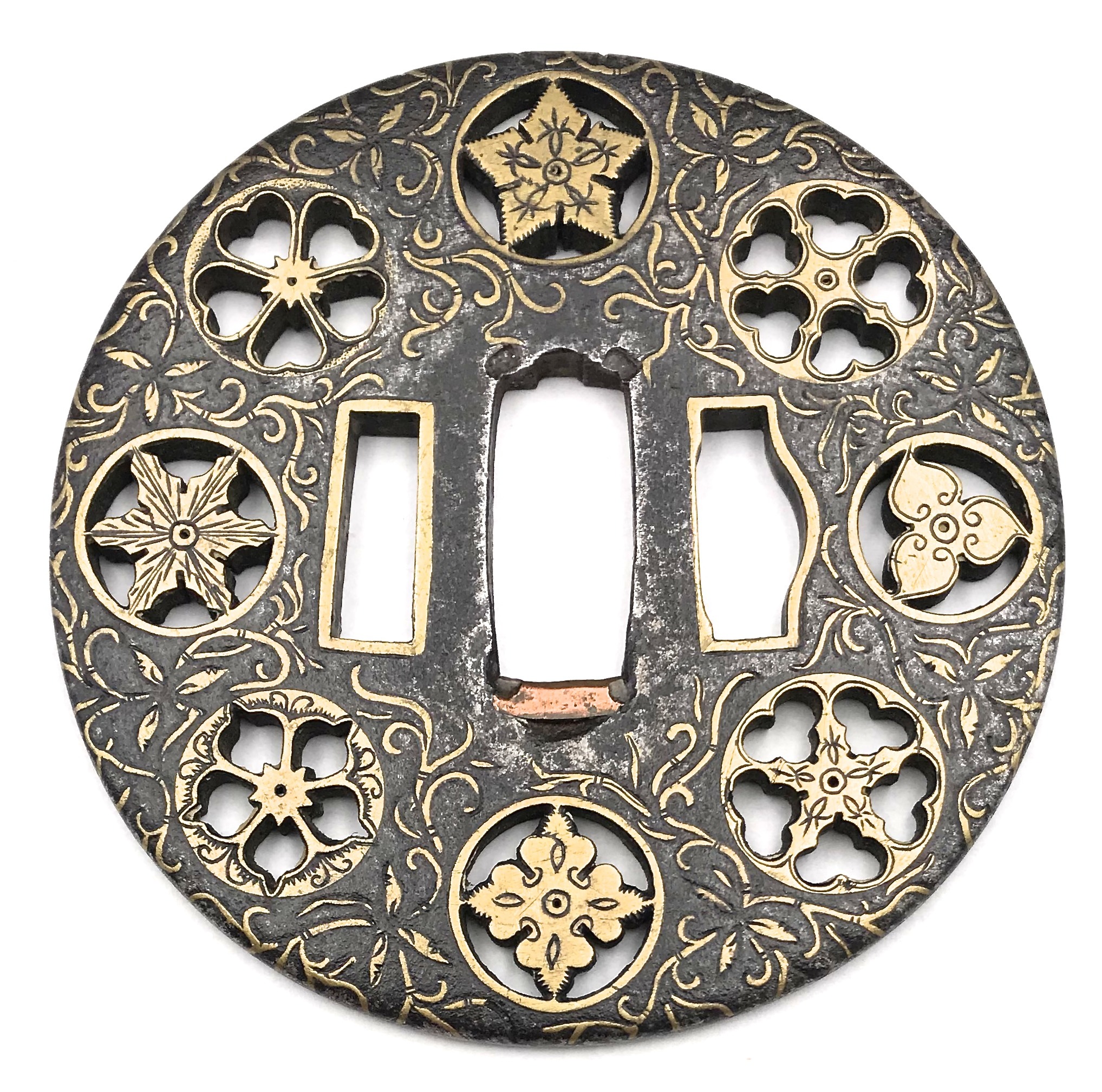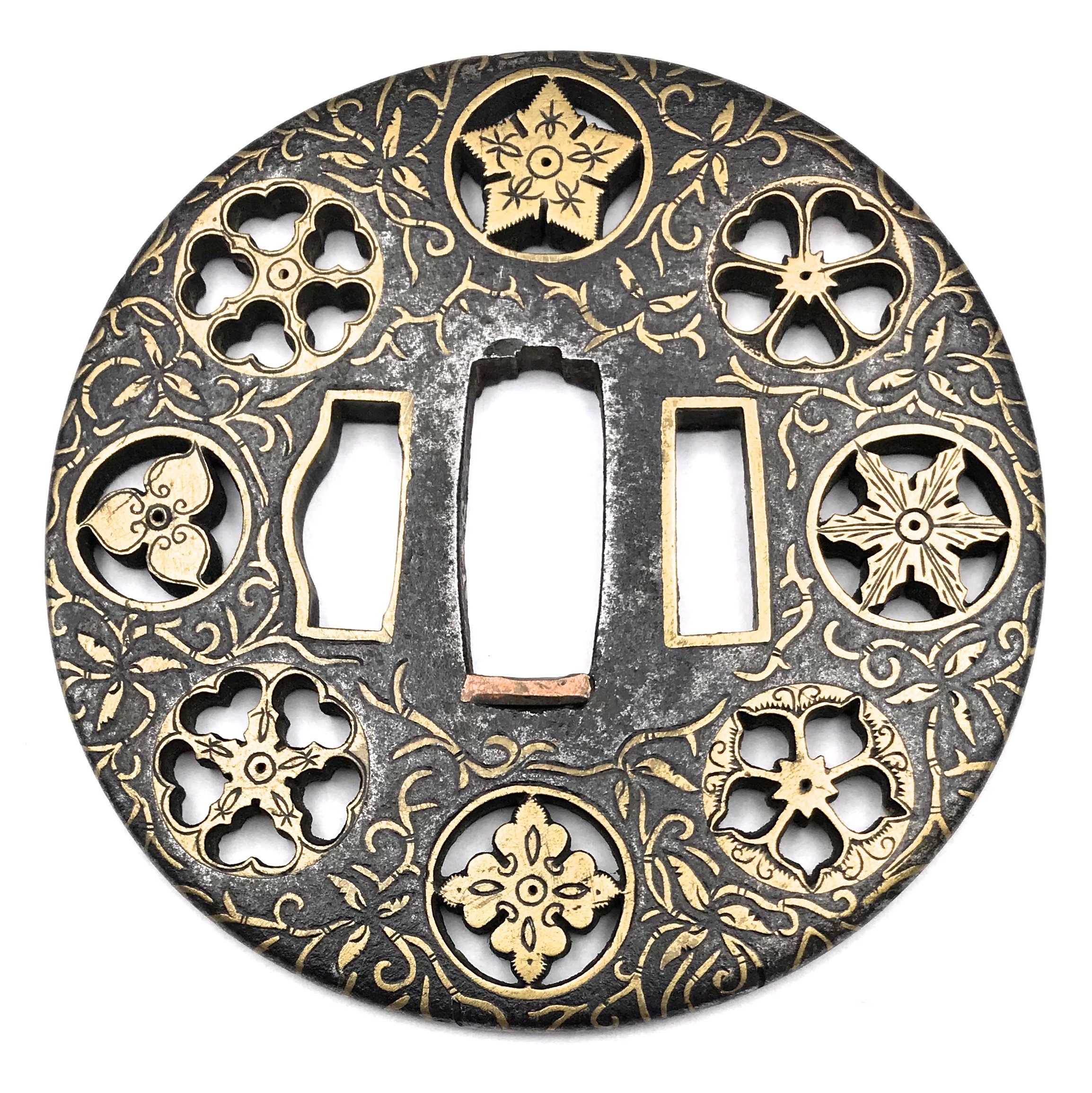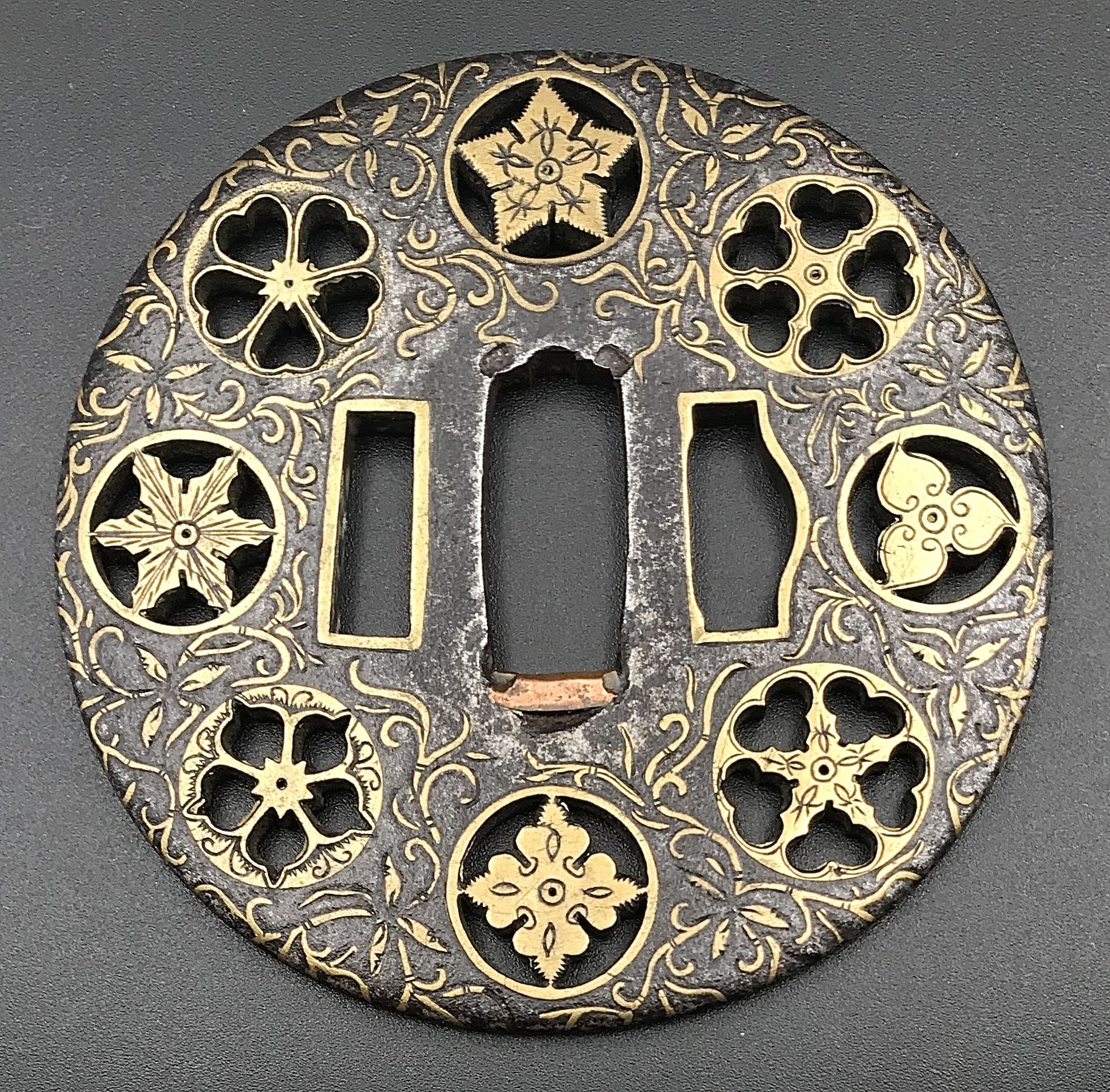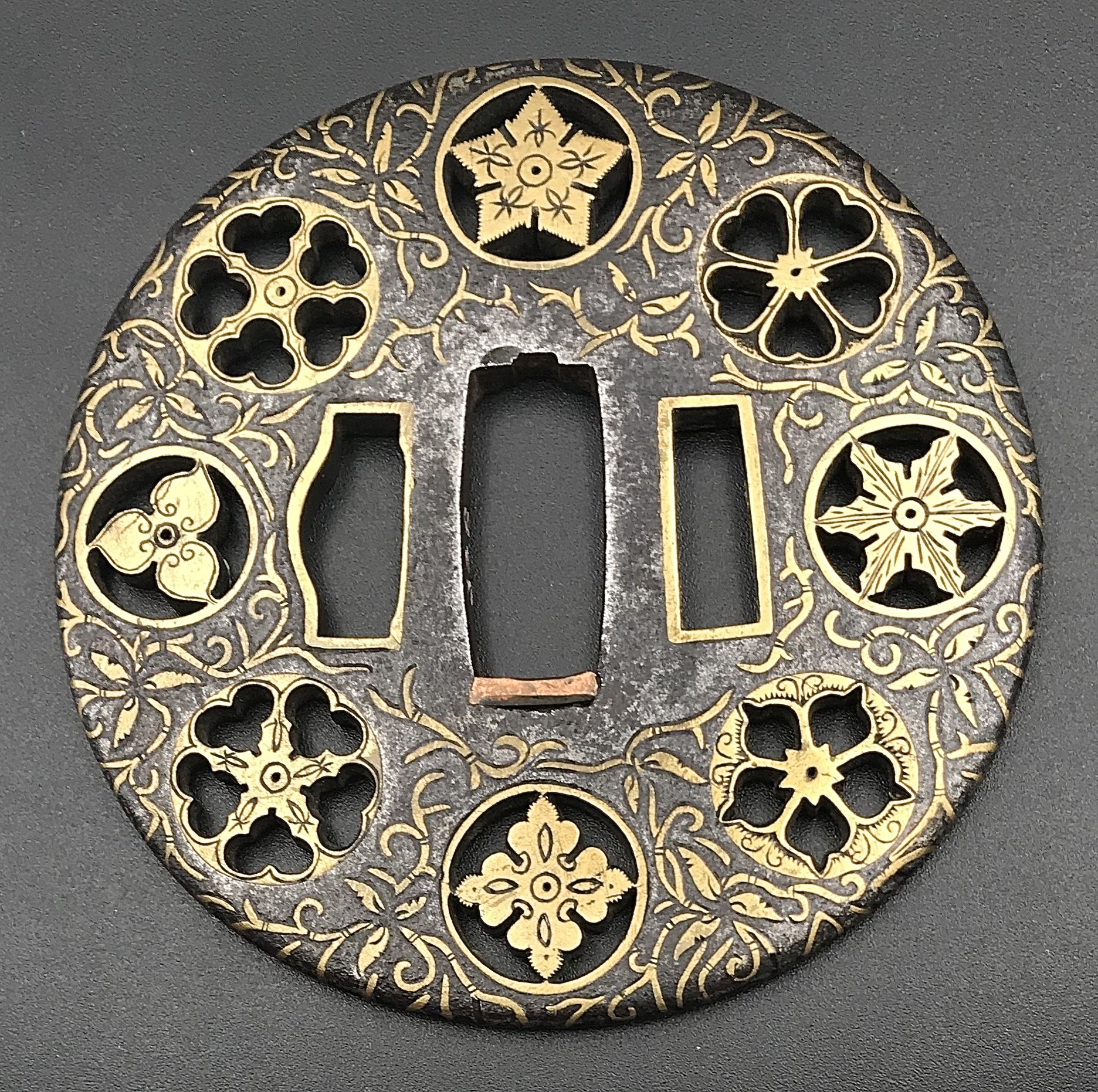Iron tsuba of round form decorated with eight roundels – circular emblems of flowers and/or family crests (mon) made of cast brass, pierced and chiseled in kebori, and with flat brass inlay (hira-zōgan) of vines or leaves all over the plate. Both hitsu-ana trimmed in brass. Nakago-ana of rectangular form, with copper sekigane. Four positive openwork (ji-sukashi) roundels at 12, 3, 6, and 9 o’clock; and four negative openwork (in-sukashi) roundels with cherry blossom, bellflower, and two variations on suhama theme.
Yoshirō school (Kaga-Yoshirō). The Momoyama or early Edo period, late 16th to early 17th century.
Size: diameter 81.4 mm, thickness 4.7 mmat seppa-dai, 4.0 mm at rim.
Christie’s lot description: AN IRON TSUBA; EDO PERIOD (17TH CENTURY). THE DOLPHYN COLLECTION OF SAMURAI ART. The round iron tsuba pierced with roundels of various floral motifs interspersed among scrolling foliage, all inlaid with brass. 8.1 cm. high. Provenance: Pabst Collection (no. 338).


